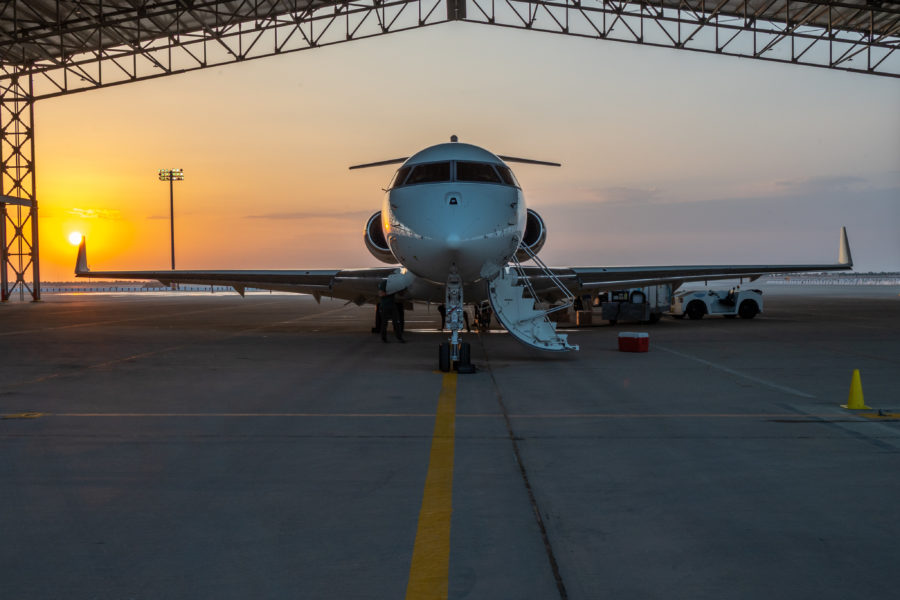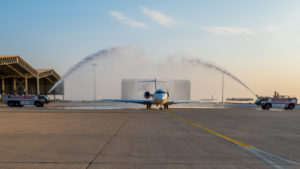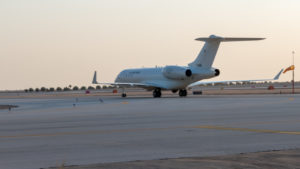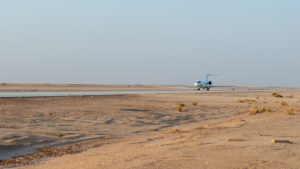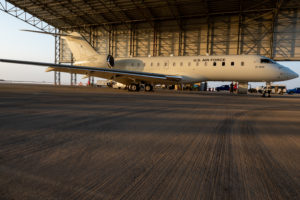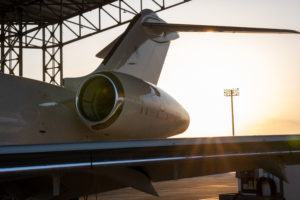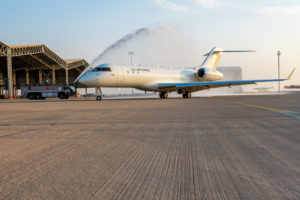The Air Force deployed a brand new version of one of its prized communications aircraft to Saudi Arabia, the service said in a Jan. 2 news release. An E-11A equipped with a Battlefield Airborne Communication Node, or BACN, arrived at Prince Sultan Air Base in the middle of last month, according to the service.
The E-11A is a high-demand, low-inventory asset. Previously the Air Force had just three E-11A aircraft, which operate in the U.S. Central Command area of responsibility. The new E-11A, serial number 21-9045, was transferred to the Air Force by airframe manufacturer Bombardier in September and arrived in Saudi Arabia on Dec. 16.
The BACN payload, made by Northrop Grumman, is able to relay and translate information from air assets and ground troops. It allows aircraft with different data links to work together and provides a way to transmit information over mountainous terrain, a feature that proved useful in supporting U.S. operations in Afghanistan. Air Force officials have often described BACN in simple terms as “Wi-Fi in the sky.”
“The BACN program reduces communication issues associated with incompatible systems, adverse terrain, and distance,” BACN materiel leader Lt. Col. Eric Inkenbrandt said in a statement when the Air Force took delivery of this latest aircraft. “The delivery of 21-9045 is the pivotal first step to advancing the mission this program provides.”
While the U.S. war in Afghanistan is over, CENTCOM still requires plenty of communication among its forces. U.S. troops are on the ground in Syria helping combat the remnants of ISIS, while Air Forces Central aircraft fly combat air patrols, conduct air strikes, and practice counter-drone exercises.
“We supply communication coverage to ground and air forces in active combat zones, who require consistent, clear communications to higher levels of leadership and other command and control assets,” Lt. Col. Todd Arthur, the commander of the 430th Expeditionary Electronic Communications Squadron, said in a statement. The 430th EECS is the only unit in the Air Force to operate the E-11A, which is a modified Bombardier Global business jet that is used for the niche BACN payload. As a result, all of the Air Force E-11A pilots are volunteers who moved over from other aircraft.
Tragically, one of the Air Force’s E-11As crashed in Afghanistan in 2020, killing the two pilots.
BACN systems are also fitted to some RQ-4 unmanned aerial systems, but the Air Force plans to retire the drone. BACN reached over 200,000 flight hours in 2020 after originally being deployed in 2008, according to Northrop Grumman. In November, the company announced it was purchasing and modifying two more Bombardier jets as part of a 2021 contract to sustain BACN operations. The Air Force plans to create a new E-11A BACN squadron at Robins Air Force Base, Ga., and eventually buy up to six additional aircraft, including the latest delivery.
“The Air Force and U.S. Congress have recognized what the E-11A platform brings to the fight,” Arthur said.
